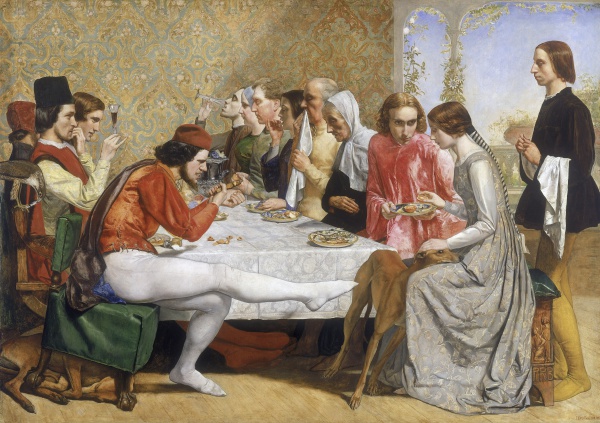Facts About Isabella
"Isabella" is a striking painting created by John Everett Millais in 1848, exemplifying the Pre-Raphaelite style. This artwork brings to life a scene from Giovanni Boccaccio's "Decameron" which was later reimagined by John Keats in his poem "Isabella, or the Pot of Basil." The painting captures the dramatic moment when Isabella's brothers discover her love affair with Lorenzo and begin plotting his murder to marry her off to a wealthy nobleman.
Millais's attention to detail is evident in the painting, which features the skewed perspective, angular poses, and vivid colors characteristic of Pre-Raphaelite art. Every figure is meticulously crafted, and the image is rich with intricate details, such as the distorted images on plates and hidden symbols.
In 2012, art curator Carol Jacobi pointed out that the painting also includes phallic symbols, adding another layer of complexity to the work. Millais's "Isabella" has even inspired other artists, such as Sam Walsh, whose painting "The Dinner Party" pays homage to this masterpiece.
"Isabella" was Millais's first Pre-Raphaelite painting to be exhibited and can now be admired at the Walker Art Gallery in Liverpool. The painting's composition, symbolism, and historical context beautifully reflect the artistic principles and influences of the Pre-Raphaelite Brotherhood.

 Ireland
Ireland